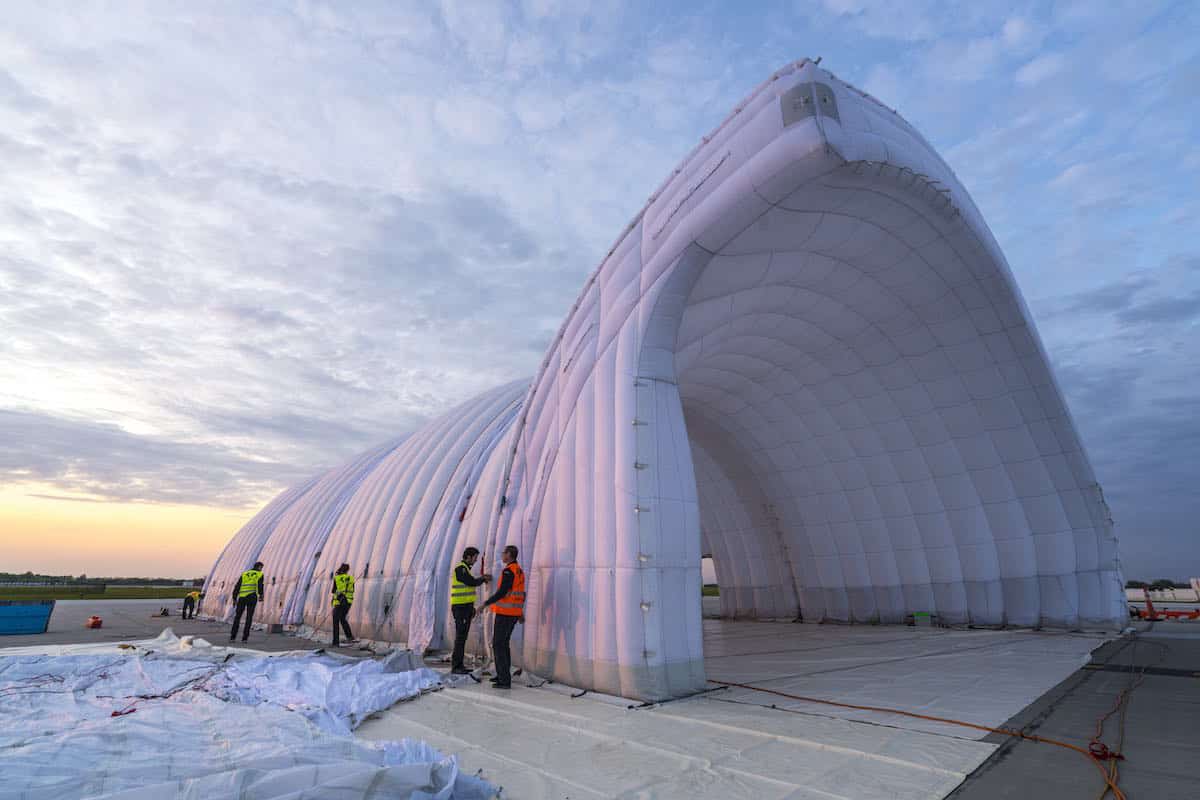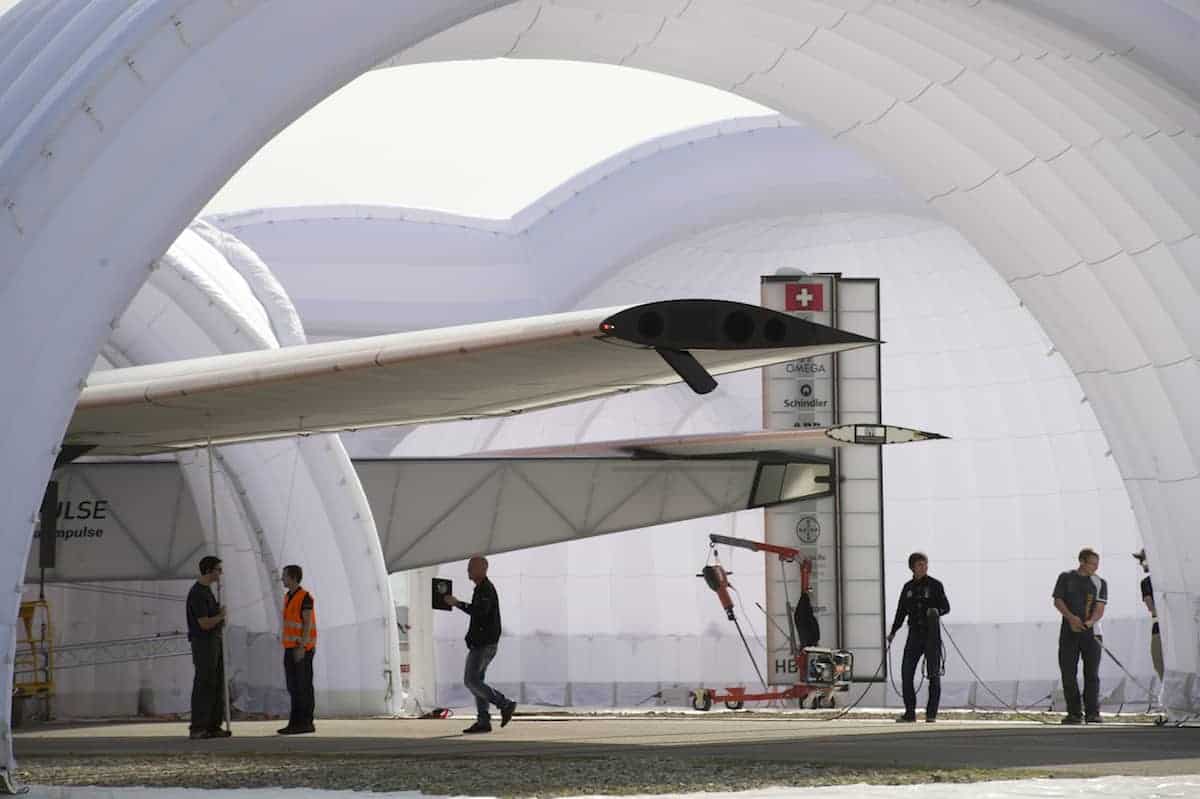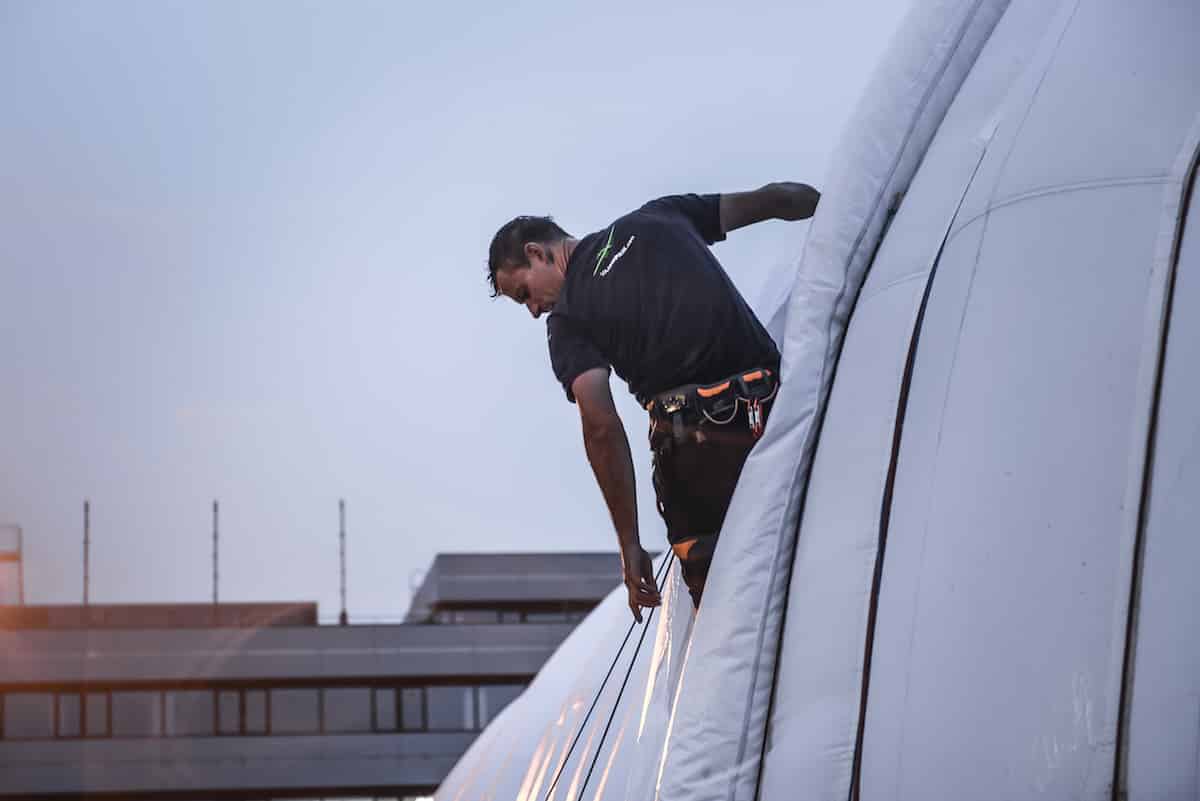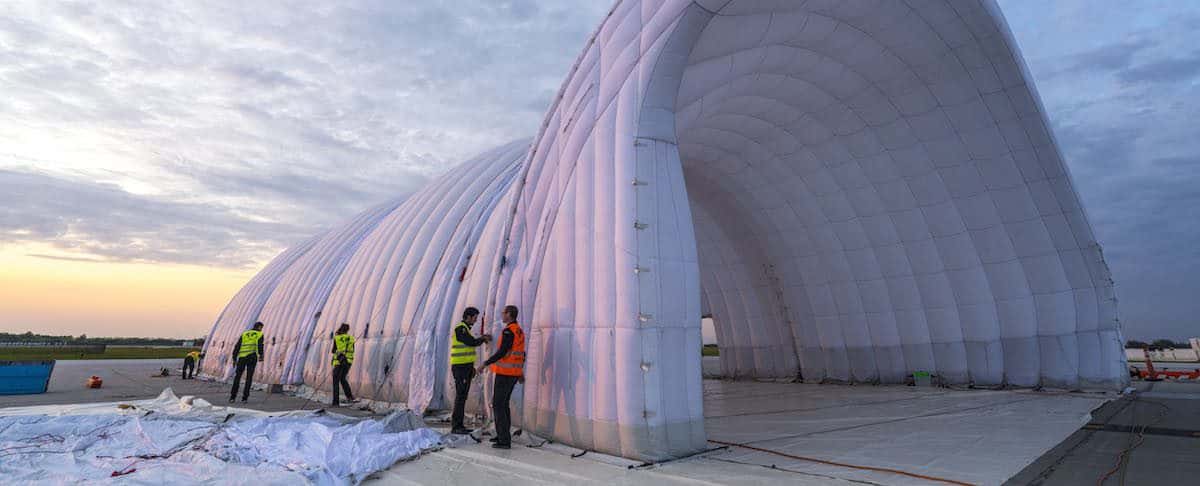By Seabright McCabe, SWE Contributor

© Solar Impulse | Revillard | Rezo.ch
Set up on old tarmac at Dayton International Airport, the hangar for Solar Impulse 2, the completely solar-powered plane carrying out a worldwide journey, was a sight to see. Under the traces of blue and rose left in the sky, it glowed like a giant string of pearls. Behind it, the tails of parked 727s loomed like relics of another age, fading into the darkness.
“Hey Paige, any way we can get a tour?” From our side of the rope line, the hangar was a tantalizing sight — so close, but oh so far. No one on our side was allowed in.
“I’ll see what I can do,” Paige Kassalen said, and took off. A few minutes later she was back. “Can you be here at 8:30 tomorrow morning?”
Again — are you kidding me? “YES!”

Photo Credit: © Solar Impulse | Chammartin
The next morning, Anne and I arrived on no sleep at the appointed spot. We got the only media tour of the hangar. We were excited beyond words. Paige walked us over to an Alice in Wonderland–sized door, rattling off safety precautions.
Don’t trip on the cables.
Check.
Don’t touch the plane.
Check.
Don’t walk under the propellers.
Double check.
It measures 289 feet by 105 feet and 36 feet tall. Deflated, the hangar is just short of 4 tons of fabric and infrastructure, along with generators and a mobile kitchen for the crew. When inflated and kept at steady pressure, it seems airy. Full of light. So clean, it’s pristine.

Photo Credit: Solar Impulse | Pizzolante
It takes 10-12 hours for a crew of 16 plus volunteers to put up. And so big it has its own echo. Specially treated fabric is incredibly strong, yet transparent enough to allow sunlight to charge the plane’s lithium polymer batteries when it’s inside.
Paige unzipped a small section of the outer fabric, to let us look up inside and see how the modules are strapped together. It was like putting your head inside the hose of a vacuum cleaner — hair goes straight up and you’re suddenly breathless.
She showed us the ropes that anchor the hangar, connected to cleats drilled deep into concrete. Hundreds of them, color-coded, red, blue, green, rated for 30-40-50 mph winds. Every cleat is later removed, and the holes patched by the ground crew.
We pressed our hands on the fabric — serious resistance. “We have climbers who get the ropes across the top — it’s something to see,” Paige said. “Crazy.”
This is part 3 in a series of blog posts. Read the last one here. Check back for part 4 of this blog, and more of SWE Magazine’s exclusive tour of Si2’s one-of-a-kind, inflatable, mobile hangar. Read our cover story in the newly redesigned SWE Magazine, coming in late August.






